
OECD-FAO Agricultural Outlook 2025–2034 - Executive Summary
15/07/2025
The OECD-FAO Agricultural Outlook 2025–2034 provides an assessment of the ten-year prospects for agricultural commodity and fish markets at national, regional, and global levels. The report highlights how rising incomes and urbanization are increasing demand for animal-source foods in middle-income countries, while also offering insights into pathways for eliminating undernourishment and reducing greenhouse gas emissions.

OECD-FAO Agricultural Outlook 2025-2034
15/07/2025
The Agricultural Outlook 2025–2034 is a collaborative effort of the Organisation for Economic Co-operation and Development (OECD) and the Food and Agriculture Organization (FAO) of the United Nations. It brings together the commodity, policy, and country expertise of both organisations, as well as input from collaborating member countries, to provide an annual assessment of the prospects for the coming decade of national, regional, and global agricultural commodity markets.

Meat and meat products (Market Summary)
12/06/2025
This report provides an analysis of the most recent developments in the global meat market, including a short-term outlook.

Food Outlook – Biannual report on global food markets – June 2025
12/06/2025
FAO’s latest assessments indicate a relatively optimistic outlook for food commodity markets, with production and trade of all commodities, except sugar, anticipated to increase. However, this growth will have different impacts on stock recovery, influenced by the delicate balance between supply and demand. Global food commodity production remains vulnerable to weather conditions.
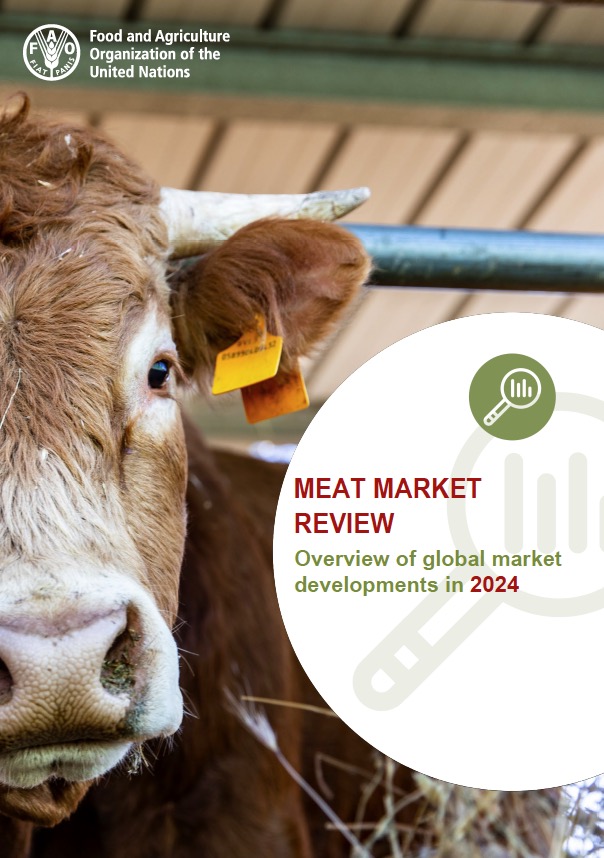
Meat Market Review. Overview of global market developments in 2024
22/04/2025
The April 2025 issue of the publication summarizes the salient trends and drivers of market developments and significant public policy changes in 2024. The review shows that world meat production expanded in 2024, underpinned by increased slaughter and improved profitability.

Meat Market Review. Emerging trends and outlook in 2024
27/11/2024
The review finds that global meat production is forecast to increase moderately in 2024, driven by higher slaughter rates and favourable profit margins. International meat trade is also predicted to recover, as improving economic conditions and limited national supplies in some leading importing countries are expected to drive a surge in import demand.

Meat and meat products (Market summary)
14/11/2024
This report provides an analysis of the most recent developments in the global meat market, including a short-term outlook.

Food Outlook – Biannual Report on Global Food Markets - November 2024
14/11/2024
FAO’s latest assessments indicate differing trajectories across different commodities, with wheat, maize, and sugar production set to decline, while outputs of dairy, fisheries, meats, oilseeds, and rice are expected to increase, with implications for utilization, trade, and stock levels. However, global food production remains susceptible to shocks arising from weather conditions, geopolitical tensions, and policies.

OECD-FAO Agricultural Outlook 2024-2033 - Chapter 6 (Meat)
06/07/2024
This chapter describes market developments and medium-term projections for world meat markets for the period 2024-33. Projections cover consumption, production, trade and prices for beef and veal, pig meat, poultry, and sheep meat. The
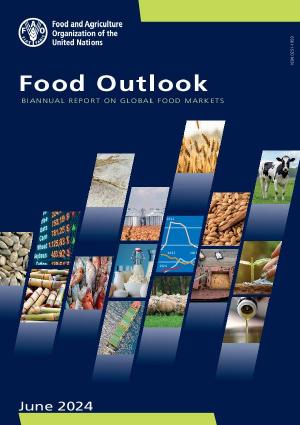
Food Outlook – Biannual Report on Global Food Markets - June 2024
13/06/2024
FAO’s latest forecasts point to increased production and higher stocks for several basic foodstuffs. However, global food production remains susceptible to shocks arising from weather conditions, geopolitical tensions, and policies. These factors could disrupt the delicate balance between supply and demand, impacting global food security.

Meat Market Review. Overview of global market developments in 2023
22/04/2024
The April issue of the publication summarizes the salient trends and drivers of market developments and significant public policy changes in 2023. The review shows that world meat production increased in 2023, reflecting production increases across all meat types, driven by favourable production conditions in some producing regions.

Food Outlook – Biannual Report on Global Food Markets - November 2023
09/11/2023
FAO's latest forecasts point to favourable production outlooks across most basic foodstuffs. However, global food production systems remain vulnerable to shocks, stemming from extreme weather events, and rising geopolitical tensions and policies, potentially tipping the delicate demand-supply balances, dampening prospects for international trade in food commodities and with implications for global food security.

Meat Market Review – Overview of market and policy developments in 2022
16/10/2023
The October issue of the publication summarizes the salient trends and drivers of market developments and significant public policy changes in 2022. The review finds that a confluence of factors, including sluggish import demand from leading meat importers and rising national production, led international meat prices to trend downwards in the second half of the year.

Meat Market Review - Emerging trends and outlook, 2023
12/08/2023
he review finds that world meat production will likely expand in 2023, reflecting an increased supply of animals for slaughter amid favourable production conditions in some leading producing regions. However, global meat trade will likely contract due to sluggish economic growth and high stocks in leading importing countries. Meanwhile, international meat prices have trended downward since July 2023, underpinned by increased export availabilities with a slowdown in import demand.
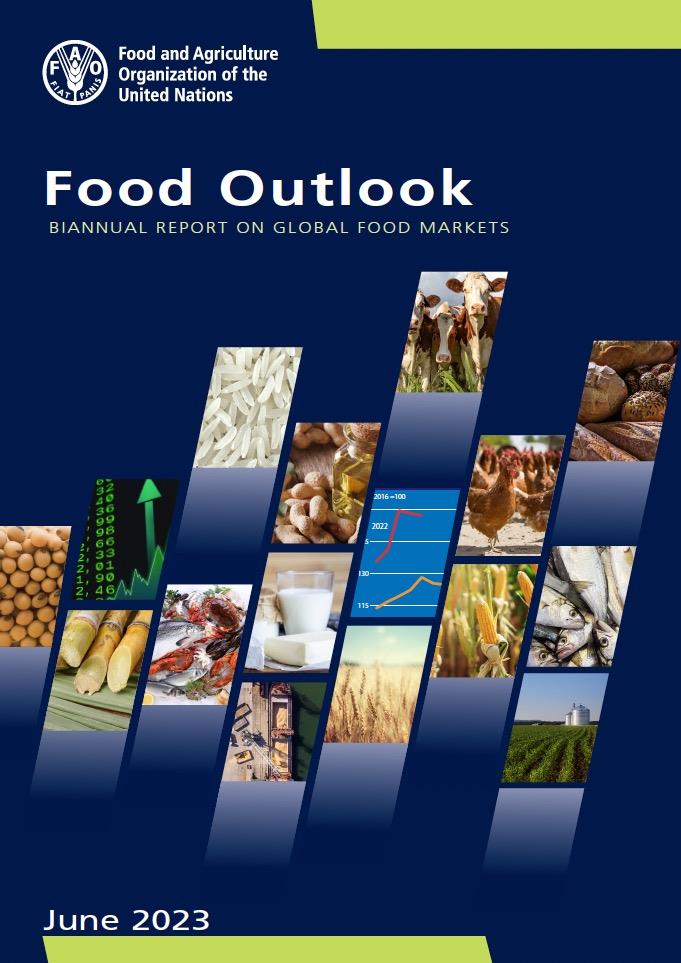
Food Outlook – Biannual Report on Global Food Markets - June 2023
15/06/2023
FAO’s latest forecasts point to increases in production and higher stocks across several basic foodstuffs. However, global food production systems remain vulnerable to shocks, stemming from weather conditions, geopolitical tensions and policies, potentially tipping the delicate demand-supply balances, with implications for global food security.
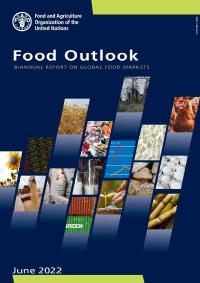
Food Outlook - June 2022
12/06/2023
In view of the soaring input prices,concerns about the weather, and increased market uncertainties stemming from the war in Ukraine, FAO’s latest forecasts point to a likely tightening of food markets in 2022.

Meat Market Review - Emerging trends and outlook 2022
25/11/2022
The November issue of the publication summarizes the salient trends and market outlook in 2022. The international meat prices reached an all-time high in June 2022 amid tight global supplies. Moreover, global meat production in 2022 is expected to expand only moderately, constrained by animal diseases, rising input costs and extreme weather events. Meanwhile, world meat trade is likely to fall, weighed by a contraction in pig meat imports and economic slowdowns and downturns.
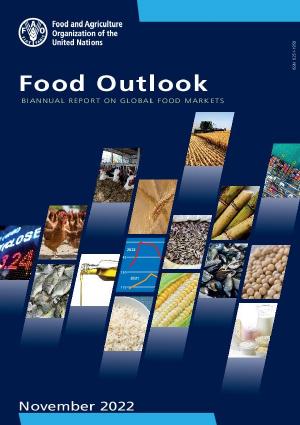
Food Outlook - November 2022
11/11/2022
FAO’s latest forecasts point to somewhat easing of market conditions for basic foodstuffs. However, increased climate variability, conflicts and geopolitical tensions, bleak economic prospects, soaring agricultural input costs and export restrictions continue to pose challenges to global food commodity market stability.

Meat Market Review - Overview of market and policy developments 2021
18/07/2022
The July issue of the publication summarizes the salient trends and drivers of market developments and significant public policy changes in 2021. The review finds that the international meat prices increased sharply in 2021 amid tight global supplies from leading exporters. Moreover, world meat output expanded, principally driven by increased pig meat output and global meat trade expanded in 2021, albeit at a slower pace than in the previous five years.

Meat Market Review: Emerging trends and outlook, December 2021
16/12/2021
The December issue of the Meat Market Review presents emerging trends and outlook of international meat prices, global meat production and trade in meat products. After rising consecutively for ten months since October 2020, the FAO Meat Price Index rose to 114.1 points in July this year, driven by solid global import demand outstripping supplies from major exporting countries. However, a slowdown in pig meat imports by China weighed on international meat prices since August. World meat production in 2021 is anticipated to expand, sustained by increased pig meat output in Asia. Global meat trade is forecast to increase by 1.1 percent, but marking the slowest pace of growth in six years.
